
How to securely store and manage your crypto assets
Absolutely! Here's an introduction for the blog "How to securely store and manage your crypto assets" with a mix of informative writing and a touch of humor:
Cryptocurrency is all the rage these days, and for good reason. Digital assets like Bitcoin and Ethereum have taken the world by storm, offering a decentralized and secure way to store and transfer value. But with great power comes great responsibility, and managing your crypto assets can be tricky business. After all, you wouldn't leave your life savings lying around in a public park, would you? Of course not! So why leave your digital assets vulnerable to theft and loss?
Fear not, my dear reader! In this article, we'll be discussing everything you need to know about securely storing and managing your crypto assets. From different types of crypto wallets to best practices for protecting your assets from hacks and theft, we've got you covered. And don't worry, we'll keep things light and informative, so you won't need a degree in computer science to follow along.
But why bother securing your crypto assets in the first place? Well, for starters, the world of cryptocurrency can be a dangerous place. With billions of dollars at stake, hackers and scammers are constantly on the prowl, looking for vulnerabilities in digital wallets and exchanges. If you're not careful, you could easily fall victim to a phishing attack, malware infection, or other nefarious schemes.
So if you're serious about your digital assets, it's time to take security seriously. Don't worry, we'll guide you through the process step by step, so you can sleep soundly at night knowing your crypto assets are safe and sound. So grab a cup of coffee, sit back, and let's dive into the wonderful world of crypto security!
Different types of crypto assets
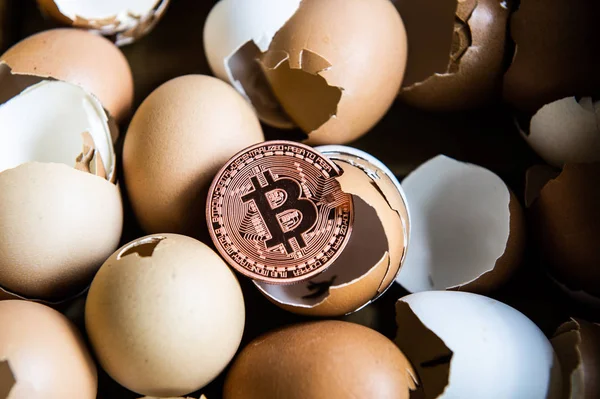
When it comes to crypto assets, there's no shortage of variety. From the granddaddy of them all, Bitcoin, to newer kids on the block like Dogecoin and Binance Coin, the world of cryptocurrency is constantly evolving. So what are these digital assets, exactly? Let's take a closer look at some of the different types of crypto assets out there.
Bitcoin is undoubtedly the most famous crypto asset, and for good reason. Created in 2009 by an unknown person or group using the pseudonym Satoshi Nakamoto, Bitcoin is a decentralized digital currency that operates on a peer-to-peer network. It's also the most valuable crypto asset, with a market cap that often exceeds that of entire countries. But Bitcoin isn't the only game in town.
Ethereum is another popular crypto asset that's gained a lot of attention in recent years. Unlike Bitcoin, which is primarily used as a store of value, Ethereum is a platform for building decentralized applications (dApps) and smart contracts. It uses its own programming language, called Solidity, and has spawned a whole ecosystem of dApps, including games, social networks, and even decentralized finance (DeFi) platforms.
Litecoin is another well-known crypto asset that was created in 2011 by Charlie Lee, a former Google engineer. It's often referred to as the "silver to Bitcoin's gold" and operates on a similar blockchain technology. However, Litecoin has a faster block generation time than Bitcoin, which allows for faster transactions and lower fees.
Other types of crypto assets include Ripple (XRP), which is primarily used for cross-border payments and remittances, and Tether (USDT), which is a stablecoin that's pegged to the value of the US dollar. And let's not forget about the meme-inspired Dogecoin, which was created in 2013 as a joke but has since gained a cult following and even garnered attention from the likes of Elon Musk.
So there you have it, a brief overview of some of the different types of crypto assets out there. Each has its own unique properties and use cases, and the world of cryptocurrency is only getting bigger and more diverse. But no matter which crypto assets you choose to invest in, one thing is clear: you'll need to take security seriously if you want to keep your digital assets safe and sound.
Risks of insecure storage and management of crypto assets

If you're not careful with how you store and manage your crypto assets, you could be putting yourself at risk of a number of threats. While cryptocurrency offers a level of anonymity and security, it's not invincible, and there are plenty of bad actors out there looking to take advantage of any vulnerabilities they can find.
One of the biggest risks of insecure storage and management of crypto assets is theft. Hackers are constantly on the lookout for ways to gain access to digital wallets and exchanges, and once they do, they can easily transfer your crypto assets to their own wallets. This can happen through a variety of methods, including phishing attacks, malware infections, and social engineering.
Another risk is loss. Unlike traditional bank accounts, crypto assets aren't insured by the FDIC, which means that if you lose your private keys or otherwise lose access to your crypto assets, there's no recourse for getting them back. This can happen if you accidentally delete your digital wallet, lose your computer or phone, or forget your private key.
And then there's the risk of scams. Because cryptocurrency is a relatively new and unregulated industry, there are plenty of scammers out there looking to take advantage of unsuspecting investors. They might offer fake investment opportunities, sell fake tokens, or even create fake exchanges or wallets to steal your crypto assets.
So how can you protect yourself from these risks? Well, for starters, make sure you're using a reputable exchange or wallet that has a proven track record of security. You should also enable two-factor authentication, which adds an extra layer of protection to your accounts. And never, ever share your private keys with anyone.
It's also a good idea to keep your crypto assets in cold storage, which means storing them offline on a device that's not connected to the internet. This can be a hardware wallet or even a paper wallet, which is simply a piece of paper with your private key written on it.
In short, the risks of insecure storage and management of crypto assets are very real, but they can be mitigated with a few simple steps. By taking security seriously and being vigilant about protecting your digital assets, you can enjoy the benefits of cryptocurrency without putting yourself at risk.
Understanding the different types of crypto wallets
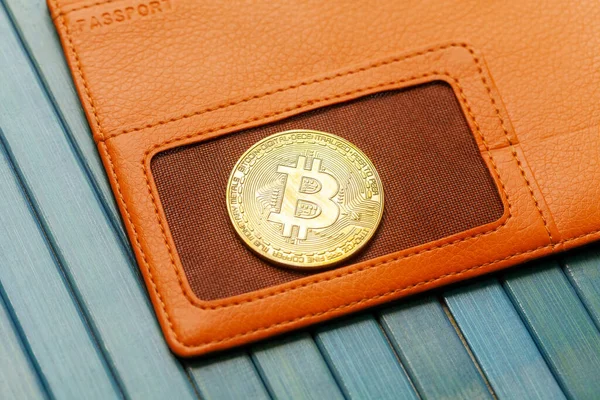
If you want to store your crypto assets securely, you're going to need a crypto wallet. But what exactly is a crypto wallet, and what are the different types available? Let's take a closer look at the various types of crypto wallets you can choose from.
First, there's the software wallet. This is a type of digital wallet that you can download onto your computer or phone. Software wallets come in two main varieties: hot wallets and cold wallets. Hot wallets are connected to the internet, which makes them more convenient but also more vulnerable to hacking. Cold wallets, on the other hand, are offline and therefore more secure, but less convenient to use.
Next up is the hardware wallet. This is a physical device that looks a bit like a USB stick and is used to store your private keys offline. Hardware wallets are considered to be one of the most secure ways to store your crypto assets, as they're not vulnerable to hacking or malware attacks. However, they can be a bit pricey, and you'll need to keep them somewhere safe when you're not using them.
Another type of crypto wallet is the paper wallet. This is simply a piece of paper that has your private key printed on it. It might sound low-tech, but paper wallets can actually be very secure, as long as you keep them somewhere safe (like a safe deposit box or a fireproof safe). The downside is that they can be easy to lose, and you'll need to create a new paper wallet every time you want to send or receive crypto assets.
Finally, there's the web wallet. This is a type of digital wallet that's hosted online by a third party. Web wallets can be convenient to use, but they're also more vulnerable to hacking, as you're entrusting your private keys to a third party. Plus, if the web wallet provider goes out of business or gets hacked, you could lose your crypto assets.
So there you have it, a quick overview of the different types of crypto wallets. Each has its own pros and cons, and the right choice for you will depend on your specific needs and preferences. Just remember to do your research, choose a reputable wallet provider, and keep your private keys safe and secure.
How to choose a secure crypto wallet
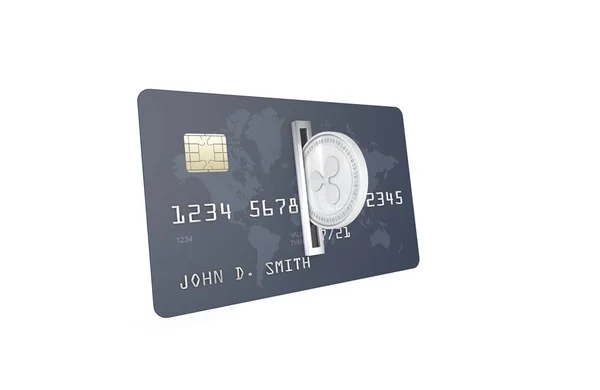
Choosing a secure crypto wallet is one of the most important decisions you'll make when it comes to managing your crypto assets. With so many options available, it can be tough to know where to start. But fear not! Here are some tips to help you choose a wallet that's both secure and user-friendly.
First and foremost, look for a wallet that has a solid track record of security. You'll want to choose a wallet provider that uses state-of-the-art security measures like two-factor authentication, encryption, and other methods to protect your private keys. Research the wallet provider and read reviews from other users to get an idea of their reputation.
Next, consider the type of wallet you want. As we discussed earlier, there are several types of wallets available, each with its own pros and cons. Think about your needs and preferences, and choose a wallet that fits your lifestyle. For example, if you're constantly on the go, a software wallet might be the best option. But if you're more concerned about security, a hardware wallet might be a better choice.
Another important factor to consider is the wallet's user interface. You'll want a wallet that's easy to use and understand, with clear instructions and a straightforward design. It's also important to make sure that the wallet supports the crypto assets you want to store. Some wallets support only a limited number of coins, so check to make sure your assets are covered before you commit.
And finally, consider the wallet's price. Some wallets are free, while others come with a fee. While it's tempting to go for the free option, keep in mind that sometimes you get what you pay for. A paid wallet may offer better security and features, and could ultimately save you money in the long run by preventing theft or loss of your crypto assets.
Choosing a secure crypto wallet can be a daunting task, but by following these tips, you'll be well on your way to making a smart and informed decision. Remember to prioritize security, consider your needs and preferences, and choose a wallet that's easy to use and supports the crypto assets you want to store. With the right wallet, you can enjoy the benefits of crypto without worrying about the risks.
Setting up and securing your crypto wallet 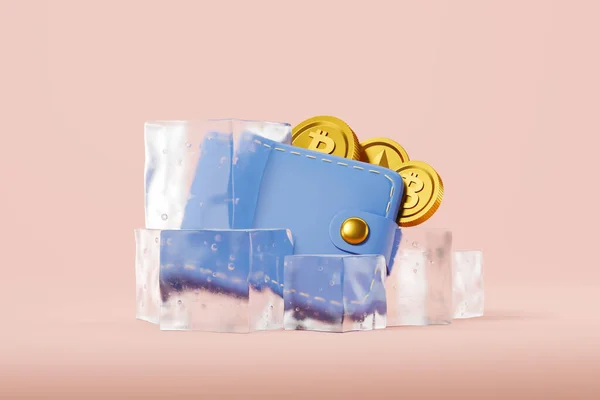

Congratulations! You've chosen a crypto wallet and you're ready to start managing your assets. But before you dive in, it's important to take some steps to set up and secure your wallet. Here are some tips to help you get started.
First, set up two-factor authentication (2FA). This is a security feature that requires you to enter a code in addition to your password when you log in. It adds an extra layer of protection to your account and makes it more difficult for hackers to gain access to your wallet. Most reputable wallets will offer 2FA, so make sure you take advantage of it.
Next, make sure you back up your wallet. This is important in case your device is lost or stolen, or if your hard drive fails. Most wallets will provide you with a seed phrase that you can use to recover your wallet if something goes wrong. Write this phrase down and store it somewhere safe, like a fireproof safe or a safety deposit box. And whatever you do, don't lose it!
It's also important to keep your wallet software up to date. This ensures that you have the latest security features and bug fixes, and helps prevent against potential vulnerabilities. Make sure to check for updates regularly and install them as soon as they become available.
And finally, be mindful of where you access your wallet. Avoid using public Wi-Fi or other unsecured networks when you're logging into your wallet. And if you're using a software wallet, make sure your device is protected by antivirus software and other security measures.
Setting up and securing your crypto wallet might seem like a hassle, but it's worth taking the time to do it right. By following these tips, you'll be well on your way to keeping your assets safe and secure. Remember to set up 2FA, back up your wallet, keep your software up to date, and be mindful of where you access your wallet. With a little bit of effort, you can enjoy the benefits of crypto without worrying about the risks.
Best practices for managing your crypto assets
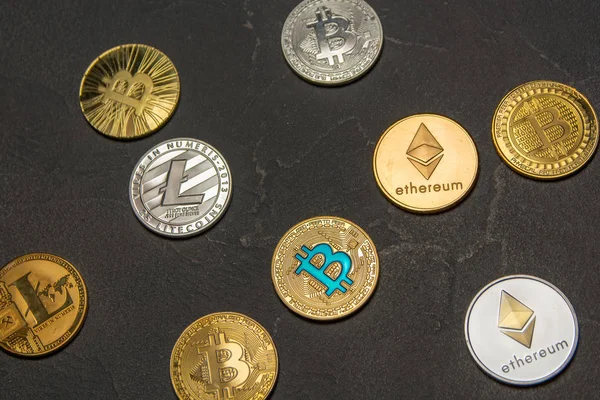
Managing your crypto assets can be a daunting task, but with the right practices, you can keep your investments safe and secure. Here are some tips to help you manage your crypto assets like a pro.
First and foremost, never share your private key with anyone. Your private key is like the key to a safe deposit box, and it's the only thing standing between your assets and potential thieves. Keep it safe and secure, and never share it with anyone, even if they claim to be from customer support.
Next, keep track of your transactions. It's important to keep a record of all your crypto transactions so that you can accurately report them to tax authorities if necessary. You can use a spreadsheet or a specialized app to keep track of your transactions, or some wallets even have built-in transaction history features.
It's also important to diversify your investments. Just like with traditional investing, it's a good idea to spread your investments across different types of crypto assets. This helps mitigate risk and ensures that your portfolio is more balanced.
And speaking of risk, don't invest more than you can afford to lose. Crypto can be a volatile market, and it's important to be realistic about your investment goals and risk tolerance. Only invest what you can afford to lose, and don't be tempted to put all your eggs in one basket.
Finally, stay informed. Keep up with the latest news and trends in the crypto world, and stay on top of any regulatory changes or potential security threats. Join online communities and follow reputable news sources to stay in the loop.
Managing your crypto assets can be challenging, but by following these best practices, you'll be well on your way to success. Remember to keep your private key safe, keep track of your transactions, diversify your investments, invest responsibly, and stay informed. With the right approach, you can manage your crypto assets like a pro and enjoy the benefits of this exciting new technology.
Protecting your crypto assets from hacks and theft 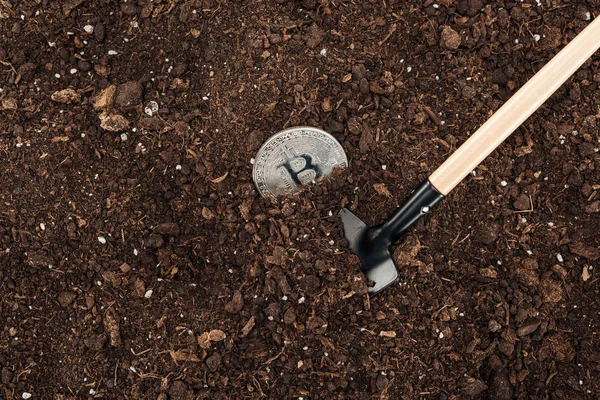

One of the biggest concerns when it comes to managing your crypto assets is the risk of hacks and theft. But there are steps you can take to protect your assets and minimize the risk of these threats. Here are some tips to keep your crypto assets safe.
First, use a hardware wallet. A hardware wallet is a physical device that stores your crypto assets offline, which makes it much more difficult for hackers to gain access. It's like having a mini Fort Knox in your pocket. Make sure to choose a reputable brand and always buy from an authorized dealer to ensure the authenticity of your device.
Second, use strong passwords and never reuse them. This may sound obvious, but it's amazing how many people use simple or easily guessable passwords. Create a strong, unique password for each account, and never reuse passwords between different accounts. Consider using a password manager to keep track of all your passwords and ensure they are all strong and unique.
Third, be wary of phishing scams. Phishing scams are a common tactic used by hackers to trick people into giving away their private keys or other sensitive information. Always double-check the email sender and URL of any links before clicking on them, and never give out your private key or other sensitive information to anyone, even if they claim to be from customer support.
Fourth, avoid using public Wi-Fi or other unsecured networks when accessing your wallet or making transactions. Hackers can easily intercept your data on public networks, so it's always best to use a secure connection.
And finally, consider using a multi-signature wallet. A multi-signature wallet requires multiple signatures (i.e., private keys) to authorize transactions, which adds an extra layer of security. This is particularly useful for businesses or high net worth individuals who may need additional security measures.
Protecting your crypto assets from hacks and theft requires some effort, but it's well worth it to ensure the safety of your investments. Use a hardware wallet, use strong passwords, be wary of phishing scams, avoid unsecured networks, and consider using a multi-signature wallet. By following these tips, you can keep your assets safe and secure.
How to recover lost or stolen crypto assets
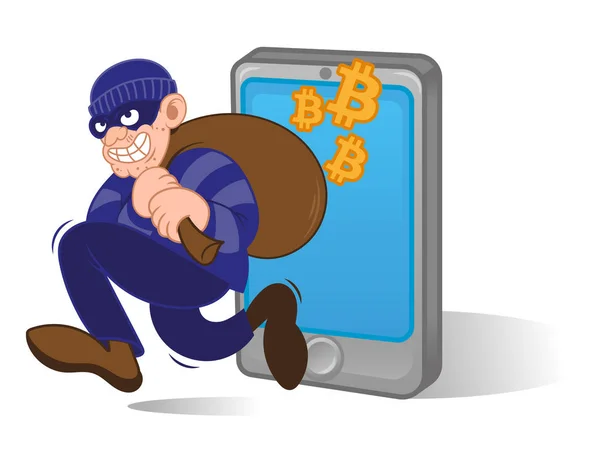
Losing your crypto assets can be a nightmare, but it's not always a lost cause. In some cases, it may be possible to recover lost or stolen crypto assets. Here are some tips for recovering your assets if the worst happens.
First, check if you have a backup. Most crypto wallets provide the option to create a backup phrase, which is a series of words that can be used to recover your assets if your device is lost or stolen. If you have a backup phrase, you may be able to use it to recover your assets.
Second, contact the customer support of your wallet provider. If your assets were lost or stolen due to a technical issue or a problem with the wallet software, the customer support team may be able to help you recover your assets. Be prepared to provide proof of ownership, such as the public address associated with your account or transaction IDs.
Third, contact law enforcement. If your assets were stolen due to a criminal act, such as a hacking incident or a theft, you should contact law enforcement as soon as possible. They may be able to help you recover your assets or identify the perpetrators.
Fourth, monitor the blockchain. The blockchain is a public ledger of all transactions made with a particular cryptocurrency. If your assets were stolen and moved to another wallet, you may be able to track them by monitoring the blockchain. Look for any transactions that involve your stolen assets and follow the trail.
And finally, be patient. Recovering lost or stolen assets can be a long and complicated process. Don't give up hope and keep trying. You may be surprised at how persistent you can be when your assets are on the line.
Recovering lost or stolen crypto assets can be a stressful and daunting task, but it's not always impossible. Check for backups, contact customer support, contact law enforcement, monitor the blockchain, and be patient. By following these tips, you may be able to recover your lost or stolen assets and get back to building your crypto portfolio.
Conclusion
Congratulations, you've made it to the end of our guide on how to securely store and manage your crypto assets! Hopefully, you now have a better understanding of the different types of crypto assets, the risks of insecure storage and management, the types of wallets available, and how to choose, set up, and secure your wallet.
It's important to remember that while crypto assets can be a great investment, they also come with risks. Insecure storage and management of your assets can lead to hacks and theft, which can be devastating. That's why it's important to choose a secure wallet, set it up properly, and follow best practices for managing your assets.
We also covered how to protect your assets from hacks and theft, as well as how to recover lost or stolen assets. These can be challenging situations, but with the right tools and strategies, you can minimize the damage and potentially recover your assets.
In conclusion, the world of crypto assets can be exciting and full of opportunity, but it's important to take the necessary precautions to protect your investments. By following the tips and strategies outlined in this guide, you can minimize your risks and confidently manage your crypto assets.
So, go forth and invest with confidence! And remember, always keep your private keys private and your sense of humor intact.
 Reviewed by jadan
on
February 24, 2023
Rating:
Reviewed by jadan
on
February 24, 2023
Rating:




No comments: